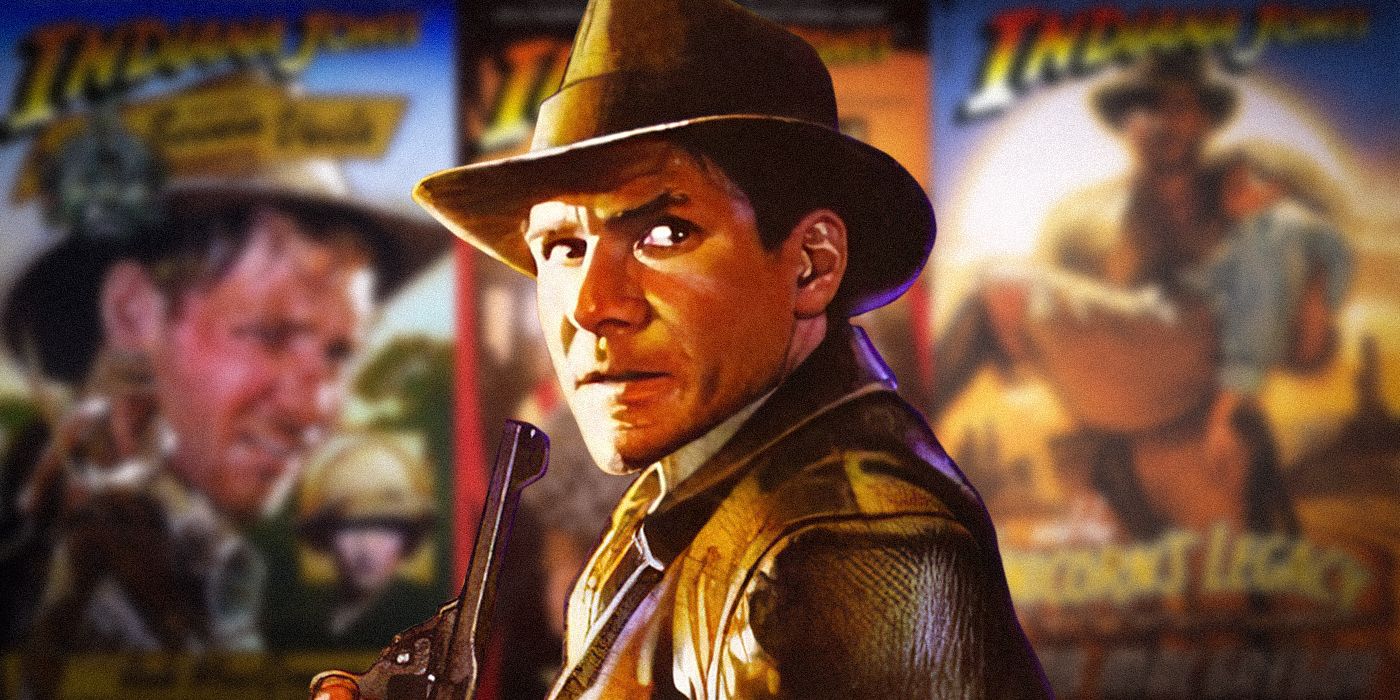We all remember our favorite novel from the 1990s — the one where the protagonist recruits friends and navigates obstacles guarding the famed Philosopher’s Stone. Wait, were you thinking about Harry Potter? No, this is actually Indiana Jones and the Philosopher’s Stone. Following the same treatment bestowed to franchises like Star Wars, the Indiana Jones intellectual property was used to create spin-off materials through the 1990s, including a strangely prolific number of novels.
After the release of the first film, a novelization of Raiders of the Lost Ark hit store shelves in 1981. This trend continued with the two subsequent installments to the franchise, but after Indiana Jones and the Temple of Doom’s premiere the spin-off books shot into differing publication avenues. In 1984, Goosebumps author R.L. Stine published the first of the Indiana Jones “Find Your Fate” books, a style similar to “Choose Your Own Adventure” where readers could control the action alongside Indy. There were 11 installments in this series, though not all were written by Stine. In 1990, another set of books following the adventures of young Indiana Jones began an account of the archaeologist’s formative years. Some were tied directly to the Young Indiana Jones Chronicles TV series, but many were original concepts.
Finally, after the completion of Indiana Jones and the Last Crusade novel, Indy creator George Lucas asked author Rob MacGregor to continue writing original stories more consistent in their characterization with Indiana Jones as seen in the films, all based on existing world myths. The first of these stories, originally published by Bantam, was released in 1991. Different writers were later brought onboard, and the last installment was published in 2009.
Something to keep in mind while discussing the scores of Indy books: most of them are meant to take place before the events Raiders of the Lost Ark. This means that, should you imagine these novels to be canon to the series, Indiana has faced a hilariously large number of overtly supernatural forces before undergoing his character arc in the first film, which somehow still transformed him from skeptic to humble believer. With that in mind, let’s take a look at few of Indy’s wackiest adventures never put to screen.
While exploring an ancient cavern complex in MacGregor’s Indiana Jones and the Unicorn’s Legacy, Indy comes across evidence of a creature widely considered to be mythical: a unicorn. Go ahead and update that species’ status from fictional to extinct, because apparently the unicorns were once real … but were wiped out in the Biblical flood. Five years after this first encounter with proof of unicorns’ existence, readers catch up with Indiana’s adventures across the American southwest in a race to recover the unicorn’s horn — an artifact containing magic.
With Andrew Helfner’s Indiana Jones and the Cup of the Vampire, we’ve officially arrived in the fan-fiction zone, because this story is a “choose your own adventure” tale featuring you as Indy’s own personal sidekick. One of many “Find Your Fate” Indiana Jones novels, this story follows your journey with Indy as you pursue the mystical Cup of Djemsheed. You control the action in a search for the goblet that grants the drinker eternal life, racing a group of occultists attempting to drown all of Europe in a curse by bringing the artifact to their leader: Prince Vlad Dracula.
At first glance, you’d think a book titled Indiana Jones and the Secret of the Sphinx would seem the most grounded in expectations for an Indiana Jones adventure out of the bunch. Indy first sets out to find an inquiring woman’s magician husband, following the trail from China to Iraq to Egypt. Constantly pursued by a Japanese spymaster villain, Indy is then caught in a chase for the Biblical Staff of Aaron as well as the Omega Book: a mystical tome containing all of humanity’s past, present, and future.
In Indiana Jones and the Dinosaur Eggs, the mystical artifact all the characters are pursuing is a triceratops. Not just an immaculately preserved fossil — the eggs to hatch a dinosaur perhaps, as the title of McCoy’s book might suggest — but an actual triceratops. The book also draws a strange number of sequences directly from the movies including: Indy attaching himself to a traveling submarine, searching for a missing archaeologist, and fighting a crime boss in a Shanghai nightclub.
The Indiana Jones franchise has always been rooted by Spielberg and Lucas in its origins of pulp adventure serials, and there’s no doubt Indiana Jones and the Dial of Destiny director James Mangold hopes to carry over that inspiration to the latest film. In a way, these novels, despite their wackiness, are sometimes more true to that source than some of the films (as evidenced by other Indy novel titles, such as Indiana Jones and the Army of the Dead and Indiana Jones and the Sky Pirates). Sometimes it’s just fun to hear about Indy finding the scroll of Merlin, hatching a triceratops, or clocking Dracula across the jaw.
Meta Data: {“keywords”:”Indiana Jones, novels, spin-off”}
Source link
